Sat 24 July 2021, Upcoming in Sep 2021
Drawing in the Meadow: Workshop with Chrystal Sparrow and Holly Schmidt
-
Holly Schmidt
ArtistHolly Schmidt (Canadian, b. 1976) is an artist, curator and educator engaging in embodied research, collaboration and informal pedagogy. She creates site-specific public projects that lead to experiments with materials in her studio. As the core of her work, Schmidt explores the multiplicity of human relations with the natural world. During her residency with the Belkin’s Outdoor Art Program, Schmidt has utilized spaces between campus buildings through a process of collective knowledge production. These artistic and ecological interventions foster relationships with plants in a manner that is both distinct from the formal, university landscape design as well as from standard notions of gallery space. Schmidt has been involved in exhibitions, projects and residencies at the Belkin Outdoor Art Program; the Burrard Arts Foundation, Vancouver; AKA Gallery, Saskatoon; Charles H. Scott Gallery, Vancouver; the Santa Fe Art Institute; Burnaby Art Gallery; and Other Sights for Artists’ Projects, Vancouver.
Read More
-
Chrystal Sparrow
ArtistChrystal Sparrow is a xʷməθkʷəy̓əm (Musqueam) Coast Salish artist and female carver who was traditionally mentored by her late father Irving Sparrow. Sparrow is a traditional and contemporary Coast Salish artist who uses feminine designs to express her culture, history and personal experiences. Her public work can seen at the YVR International Airport, Vancouver School Board, Starbucks Canada, BC Children’s Hospital and other new locations. She believes her art is a living Coast Salish art language that encompasses her identity and culture.
Read More
Join artists Chrystal Sparrow and Holly Schmidt for an afternoon of drawing in Fireweed Fields. The artists will guide a series of drawing experiences to deeply engage with the clover, plantain, buttercup and grasses in the meadow. Using materials such as oil pastels and charcoal, we will explore memory, emotion and kinship relations with plants to create expressive and unique drawings. No previous drawing experience is required. This workshop is intended for adults and families with children ages 7 and up. The workshop is free, and all necessary materials will be provided for attendees. Spaces are limited and available on a first-come, first-served basis; to register, email us at belkin.rsvp@ubc.ca with your name, age and number of attendees.
About Fireweed Fields
Fireweed Fields transforms a UBC lawn site into a fireweed meadow, encouraging increased biodiversity through gradual succession as a metaphor for the resurgence of life after a crisis. This installation acknowledges the global climate emergency: by tearing through the fabric of maintained lawns and colonial ideals, it plants the initial seeds for change and catalyzes dialogue, creative experimentation, and new biodiversity research and learning opportunities.
Reflections on Drawing in the Meadow, Summer 2021
The meadow outside the Belkin in mid-summer is growing tall and golden, indicating that August is near. The grasses are a setting for – and agents taking part in – a complicated web of relationships. Ants, beetles and bees slide up against and among the stems and flowers, and buttercup, clover and self-heals weave themselves into spaces where light and air are accessible.
Drawing in the Meadow, a workshop guided by artists Chrystal Sparrow and Holly Schmidt, took place among Schmidt’s work Fireweed Fields, a part of the artist’s Vegetal Encounters residency at the Belkin. The workshop, like the work itself, emphasized relationships; what it means to know something or someone, and to develop sustained and profound connections with human and non-human beings alike. It was an opportunity to meet and create together, and to feel a sense of community after more than a year of missing it.
Chrystal Sparrow is a Coast Salish carver, traditionally mentored by her late father and master carver Irving Sparrow. She uses Coast Salish designs in order to express her culture and her experiences. Her work with art therapy endowed the workshop with a sense of ease as participants engaged openly and fully with memory and emotion. Holly Schmidt’s practice has been described as a gesture toward those who engage with her work and, importantly, toward the land her work is situated on. It is an action that generates a connection, a prompt for further communication.


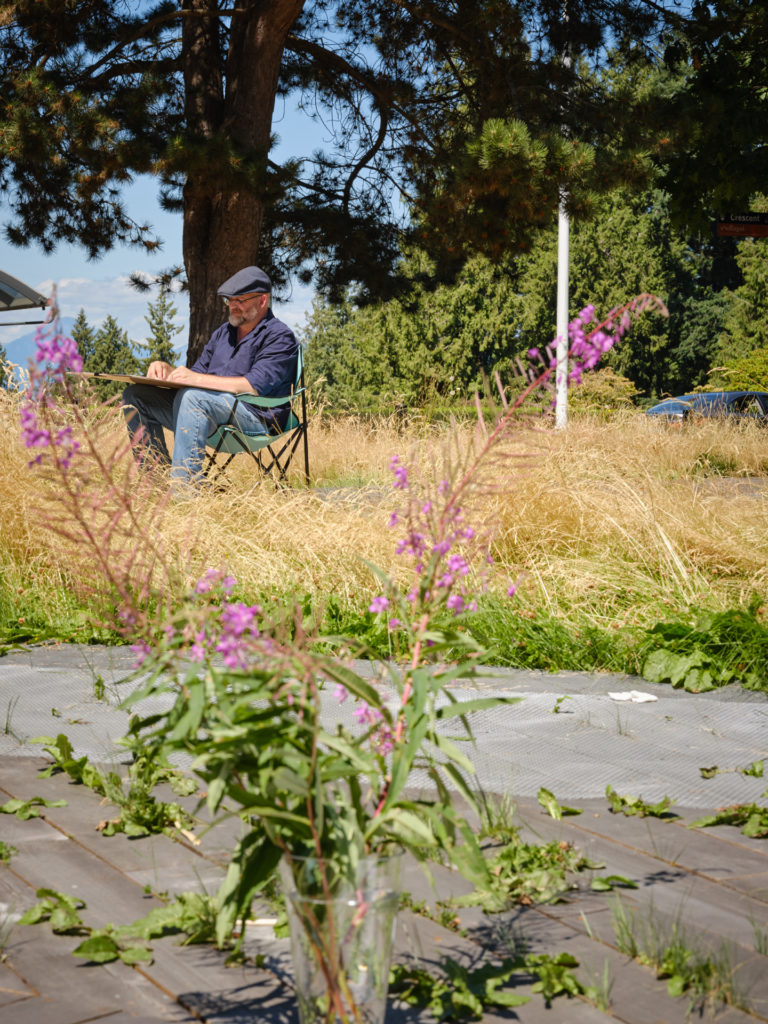
Bilateral drawing, or the action of drawing with both hands, allows open and freer movement and engagement with feelings and experiences. Oil pastels are an ideal medium, in their ability to glide smoothly over large surfaces – the bigger the better – and deposit rich fields of pigment. This first exercise was less about seeing and more about feeling the way. Sparrow explained that the movement that this type of drawing calls for can feel like a dance, and that the forms flowing out of those gestures can take on meanings or begin to resemble things. Richly varied forms of expression emerged from the exercise, including dashes resembling knitting patterns, blind contours meeting one another in unexpected ways, and swirling, energetic lines building up toward central nebulae.

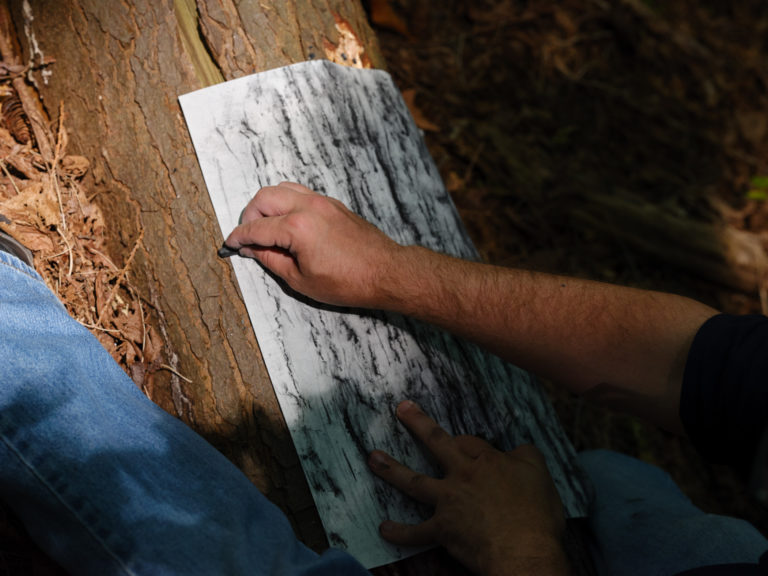

Tree rubbings took place in a shaded cedar grove, a few minutes by foot from the meadow. Participants applied charred, silvered pinecones, branches and twigs, carbonized by Schmidt, onto rice paper using a gentle rubbing motion, producing impressions of the bark underneath. Rice paper is a sensitive surface and charcoal picks up every knot and burl in the bark. The slow up-and-down motion required by this exercise echoed the physicality of the bilateral drawing. It was a chance to slow down and connect with the trees, to become familiar with the textures and forms latent in the bark, needles and leaves of local conifers, and to soak up the woody scent and the sunlight streaming through the branches.

The boardwalk and meadow that make up Fireweed Fields have become a space to gather and celebrate one another’s company. Families, groups of friends and individual participants were all in attendance, and it felt both familiar and new to be sitting comfortably among one another. Sensorially speaking, it was a feast: one to be continued into the fall and beyond as it once again becomes possible to gather.
Images: Rachel Topham Photography
-
Holly Schmidt
ArtistHolly Schmidt (Canadian, b. 1976) is an artist, curator and educator engaging in embodied research, collaboration and informal pedagogy. She creates site-specific public projects that lead to experiments with materials in her studio. As the core of her work, Schmidt explores the multiplicity of human relations with the natural world. During her residency with the Belkin’s Outdoor Art Program, Schmidt has utilized spaces between campus buildings through a process of collective knowledge production. These artistic and ecological interventions foster relationships with plants in a manner that is both distinct from the formal, university landscape design as well as from standard notions of gallery space. Schmidt has been involved in exhibitions, projects and residencies at the Belkin Outdoor Art Program; the Burrard Arts Foundation, Vancouver; AKA Gallery, Saskatoon; Charles H. Scott Gallery, Vancouver; the Santa Fe Art Institute; Burnaby Art Gallery; and Other Sights for Artists’ Projects, Vancouver.
Read More
-
Chrystal Sparrow
ArtistChrystal Sparrow is a xʷməθkʷəy̓əm (Musqueam) Coast Salish artist and female carver who was traditionally mentored by her late father Irving Sparrow. Sparrow is a traditional and contemporary Coast Salish artist who uses feminine designs to express her culture, history and personal experiences. Her public work can seen at the YVR International Airport, Vancouver School Board, Starbucks Canada, BC Children’s Hospital and other new locations. She believes her art is a living Coast Salish art language that encompasses her identity and culture.
Read More
Related
-
Exhibition
January 2019 – April 2024
Holly Schmidt: Vegetal Encounters Residency

Vegetal Encounters is Holly Schmidt’s three-year residency with the Outdoor Art Program at UBC. Through this residency, Schmidt has been creatively engaging with plant life as a significant source of life, connection and learning.
[more] -
Event
2021-24
Holly Schmidt: Fireweed Fields
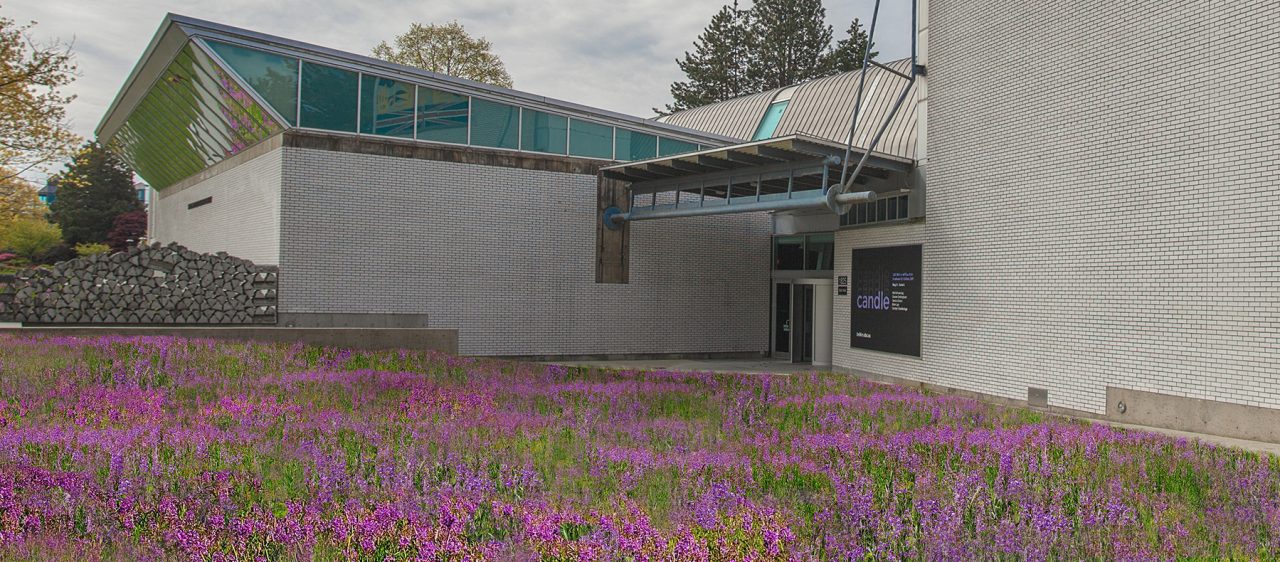
Fireweed Fields transforms a UBC lawn site into a fireweed meadow, encouraging increased biodiversity through gradual succession as a metaphor for the resurgence of life after a crisis. This installation acknowledges the global climate emergency: by tearing through the fabric of maintained lawns and colonial ideals, it plants the initial seeds for change and catalyzes dialogue, creative experimentation, and new biodiversity research and learning opportunities.
[more] -
News
06 Dec 2021
Outdoor Art: Winter 2021
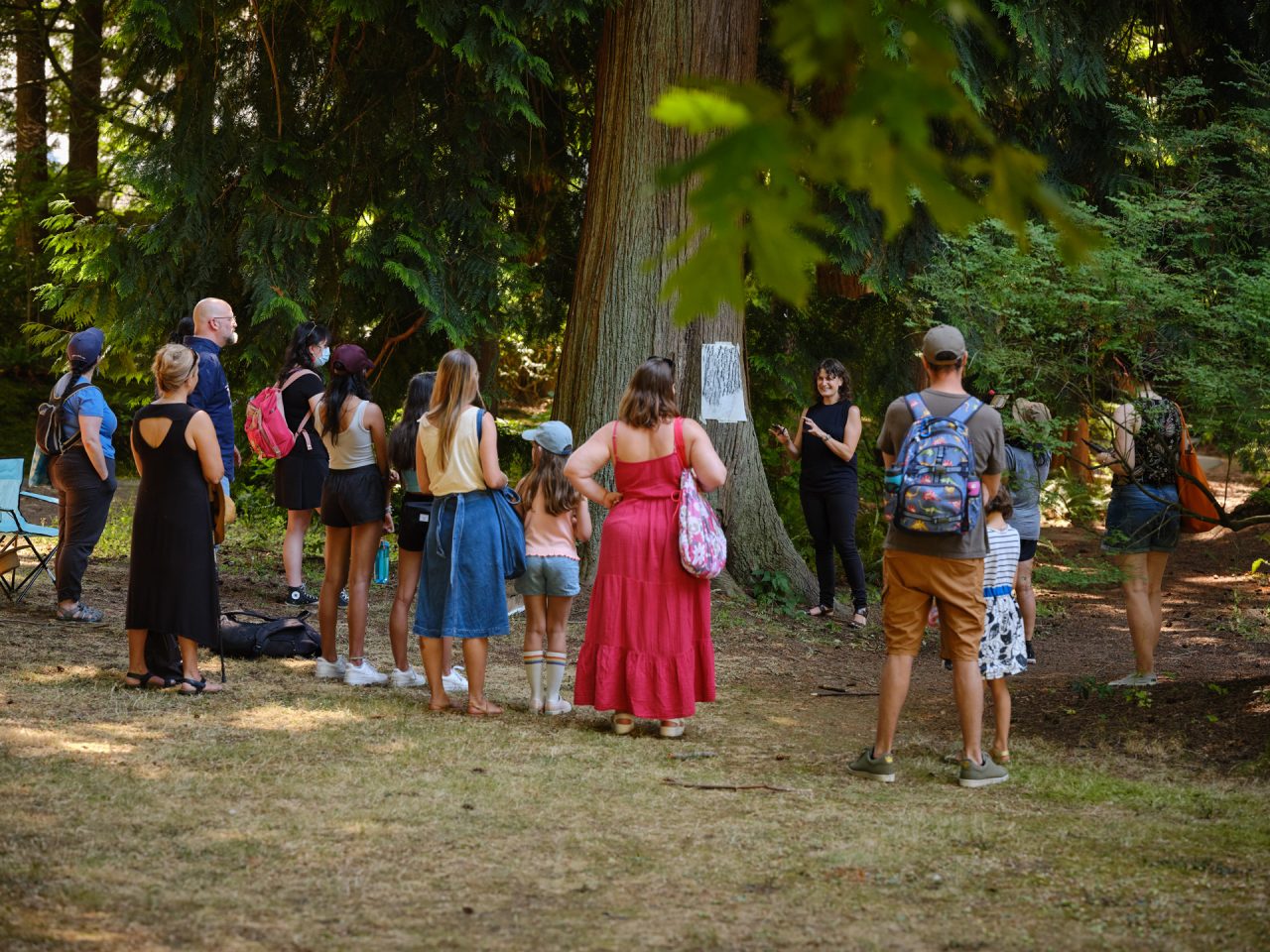
At the Belkin, we often receive questions about the University’s Outdoor Art Collection and what is involved with commissioning, acquiring or accepting donations. Responding to this growing interest, we issue annual outdoor art newsletters to share updates and backstory information about what is involved with curating, stewarding and activating the collection. These newsletters also offer a forum for the Belkin’s curatorial team to share their research and insights about art in public space.
[more] -
Event
Thursday 18 Nov 2021 at 7 pm
Film Series: A Selection by Holly Schmidt at The Norm

In collaboration with the UBC Film Society and screening at The Norm, the Belkin presents a short program of films selected by Holly Schmidt that resonate with Vegetal Encounters, her slow residency in the gallery's Outdoor Art Program. The selected films, Wild Relatives, Fordlandia and Indigenous Plant Diva, engage in multiform ways with questions of presentness, biodiversity and learning from the relationships between human and non-human beings.
[more] -
Event
10 Sep 2021
Ars Scientia: Sensorial Walk with Holly Schmidt




 [more]
[more]
-
Event
Sunday 20 Jun 2021, 11 am - 7 pm, on the odd hours
Outdoor Screen: Solstice Screening, Jumana Manna’s Wild Relatives

On Sunday, June 20, the summer solstice, we will project Jumana Manna’s film Wild Relatives (64 minutes, 2018) on the Belkin's Outdoor Screen located on the exterior of the gallery's wall along Main Mall, in a conversation across media with Holly Schmidt’s Fireweed Fields. The strange, spasmodic course of space and time in recent months has been mitigated by little other than the changes in seasons, the rhythms of nature, and the communal spaces offered by the outdoors. Seasonal and celestial markers such as that of the solstice bring this collective orientation upward and outward into marked relief. Wild Relatives will screen first at 11 am and then on each odd hour with the last screening at 7 pm.
[more] -
News
14 Jun 2021
Outdoor Screen: An Extension of the Gallery
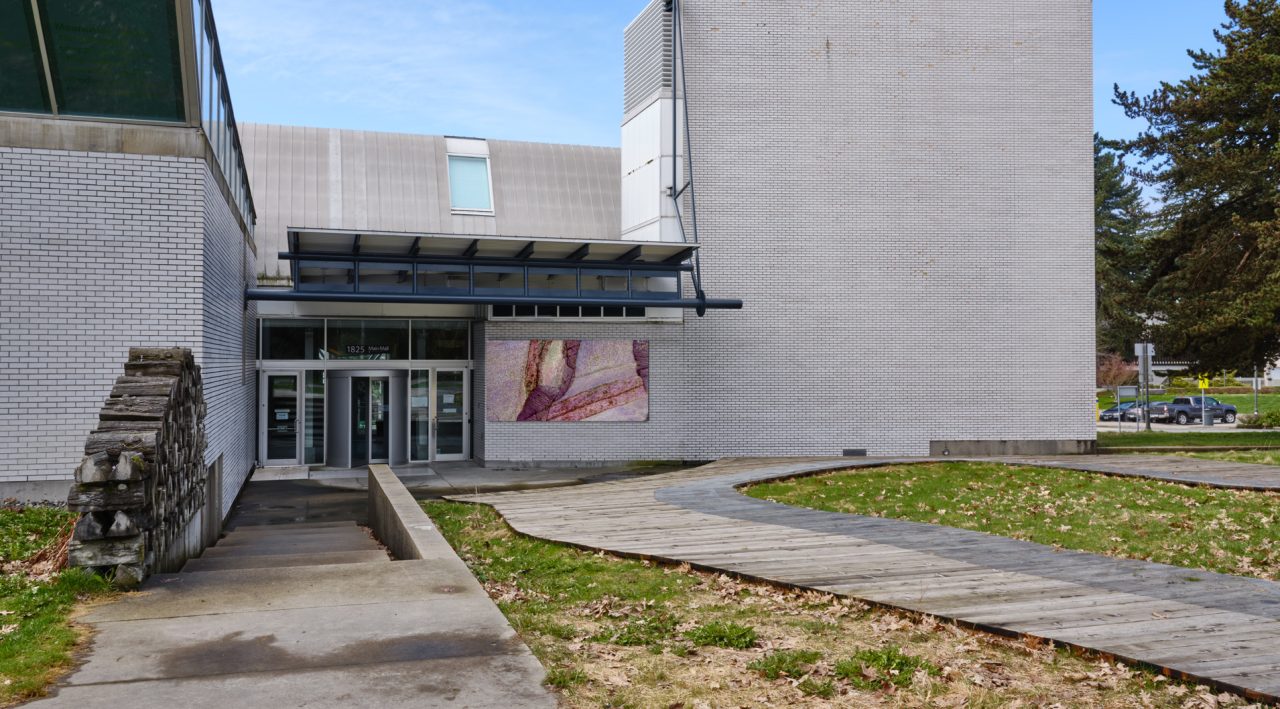
With the opening of the Image Bank exhibition on June 18, 2021, the gallery is pleased to launch the Outdoor Screen, a 4x2 metre outdoor screen curated with media works from the Belkin’s permanent collection and archive alongside work commissioned specifically for this platform.
[more] -
Event
Spring 2020
Holly Schmidt: Nomadic Structures

As part of Holly Schmidt's Vegetal Encounters residency, the artist has collaborated with Lecturer Bill Pechet and students from UBC’s Environmental Design (ENDS) program, in the School of Architecture and Landscape Architecture to explore the potential for a mobile structure to support residency programming on campus.
[more] -
News
04 May 2020
Holly Schmidt: Sensorial Walk
 Download and print the sensorial workshop Holly Schmidt devised for UBC mycology students and enjoy nature a little differently.[more]
Download and print the sensorial workshop Holly Schmidt devised for UBC mycology students and enjoy nature a little differently.[more] -
News
01 May 2020
Twenty-minute Walk with Holly Schmidt

The Belkin’s Lorna Brown talks with artist in residence Holly Schmidt about her practice and its relationship to care, distance and embodiment in this very particular historical moment.
[more] -
News
30 Apr 2020
Holly Schmidt: It All Started with a Cashew
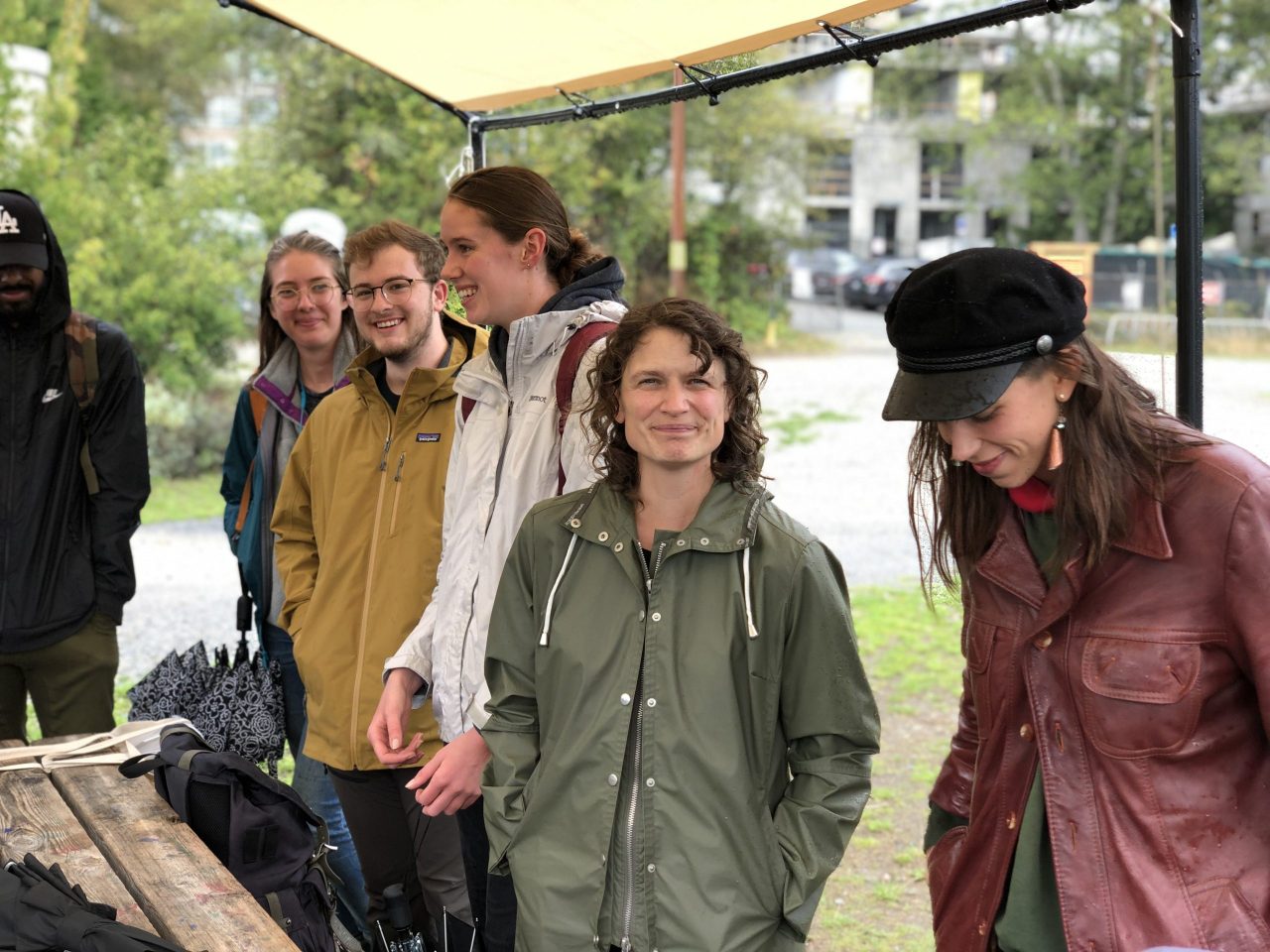
Students from UBC’s Department of Biology practice botanical drawing – and immersive observation – with artist in residence Holly Schmidt.
[more] -
News
19 Mar 2020
Holly Schmidt: Accretion
 [more]
[more] -
Event
1-6 June 2019
Holly Schmidt’s Forecast at the Audain Centre
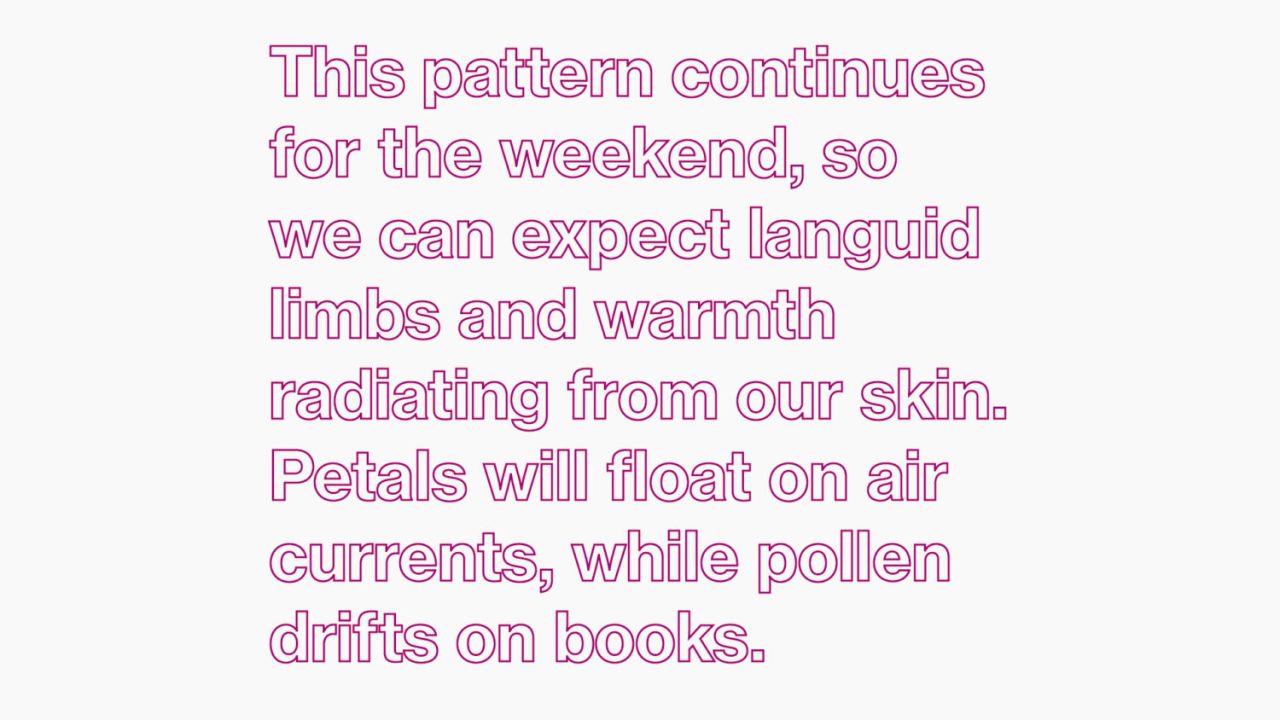 [more]
[more] -
News
02 Dec 2019
Outdoor Art: Winter 2019
 [more]
[more] -
News
14 Nov 2018
Outdoor Art: Fall 2018
 [more]
[more]